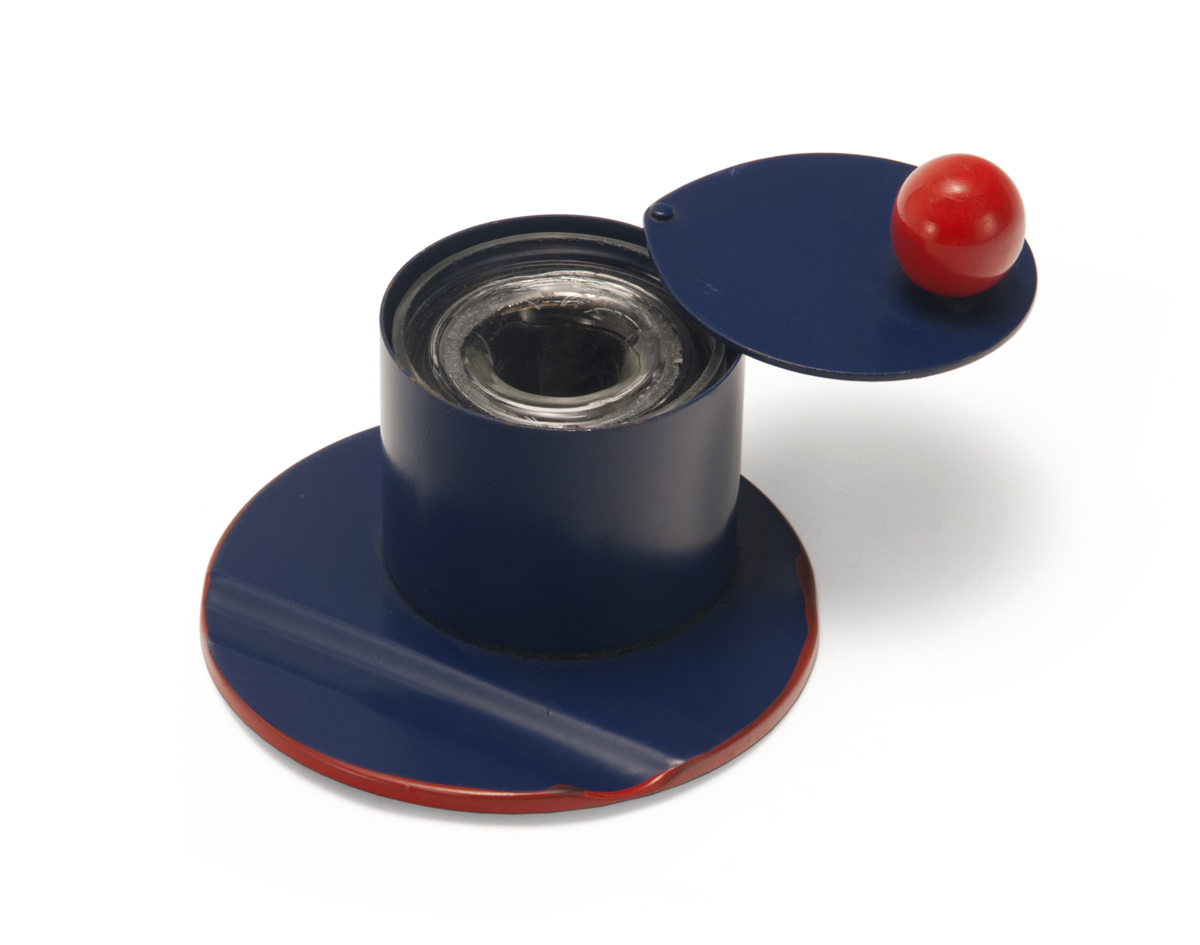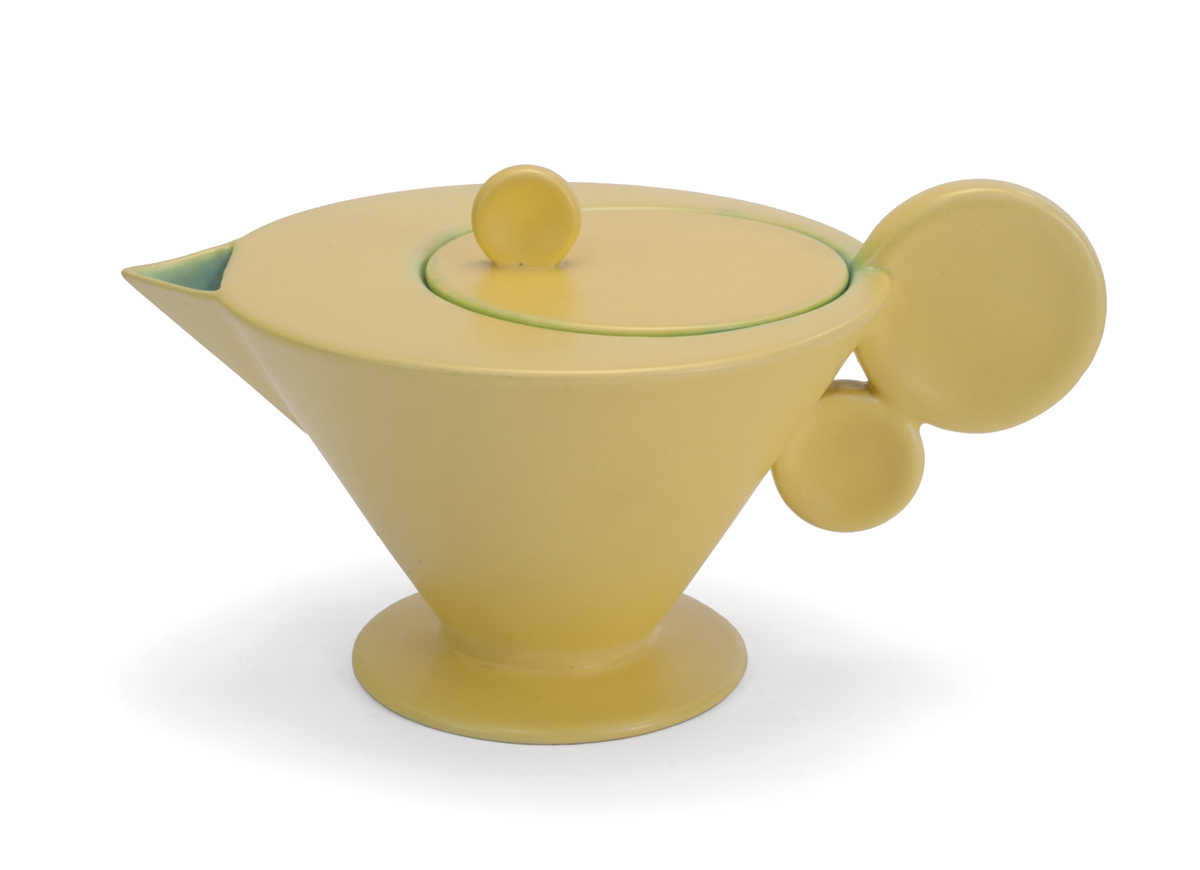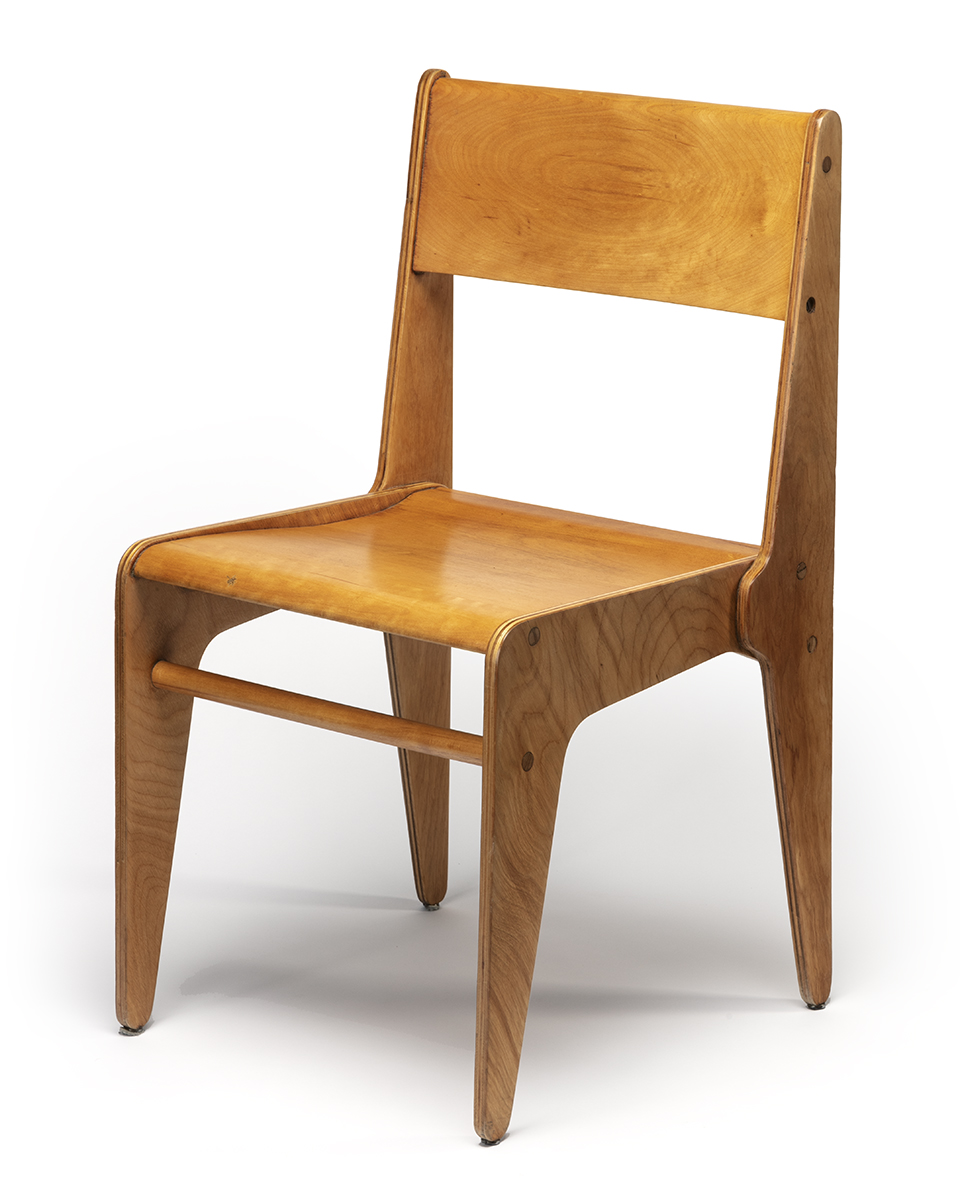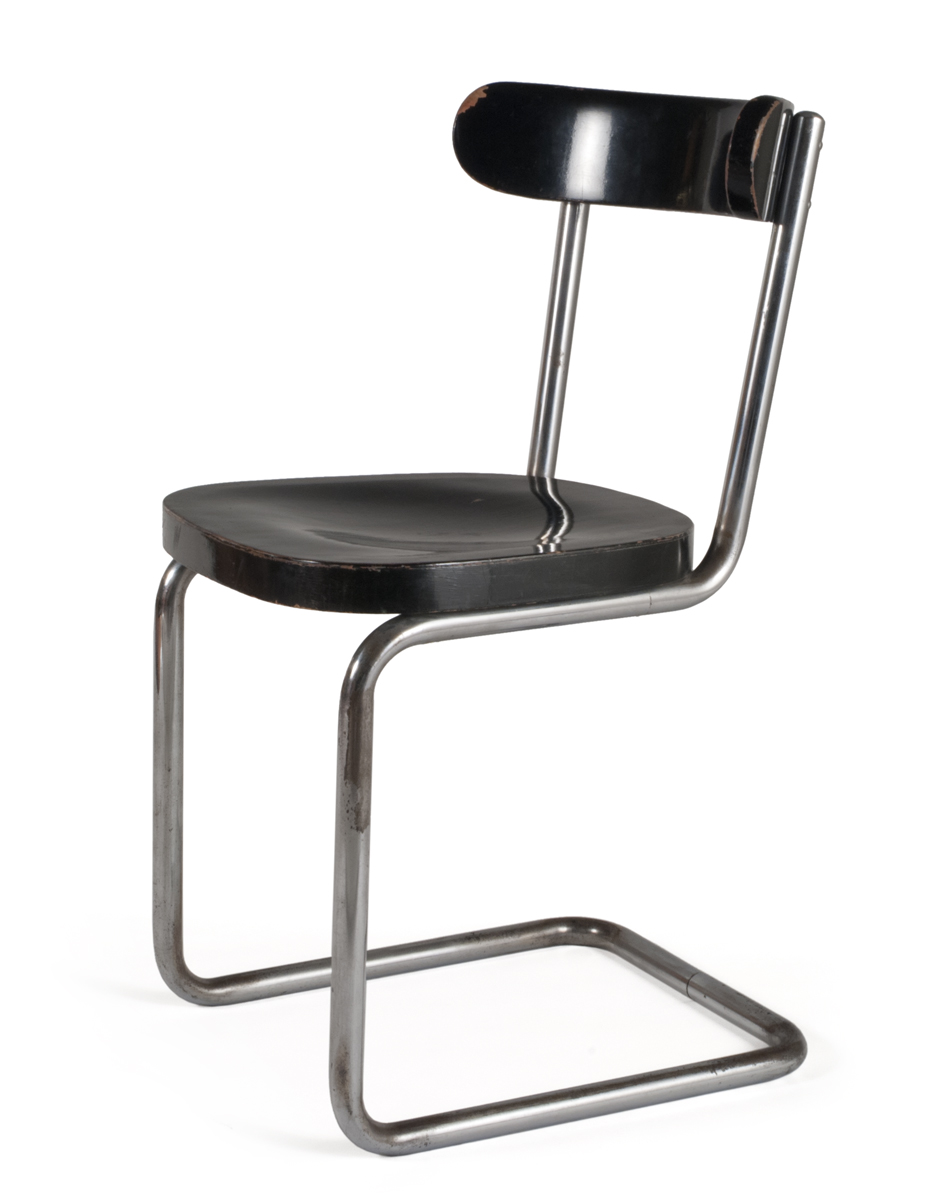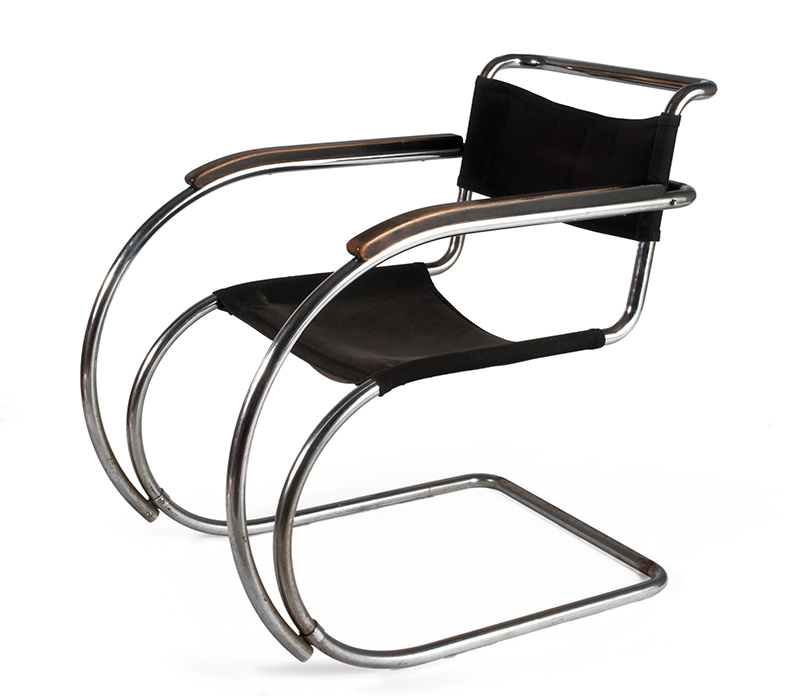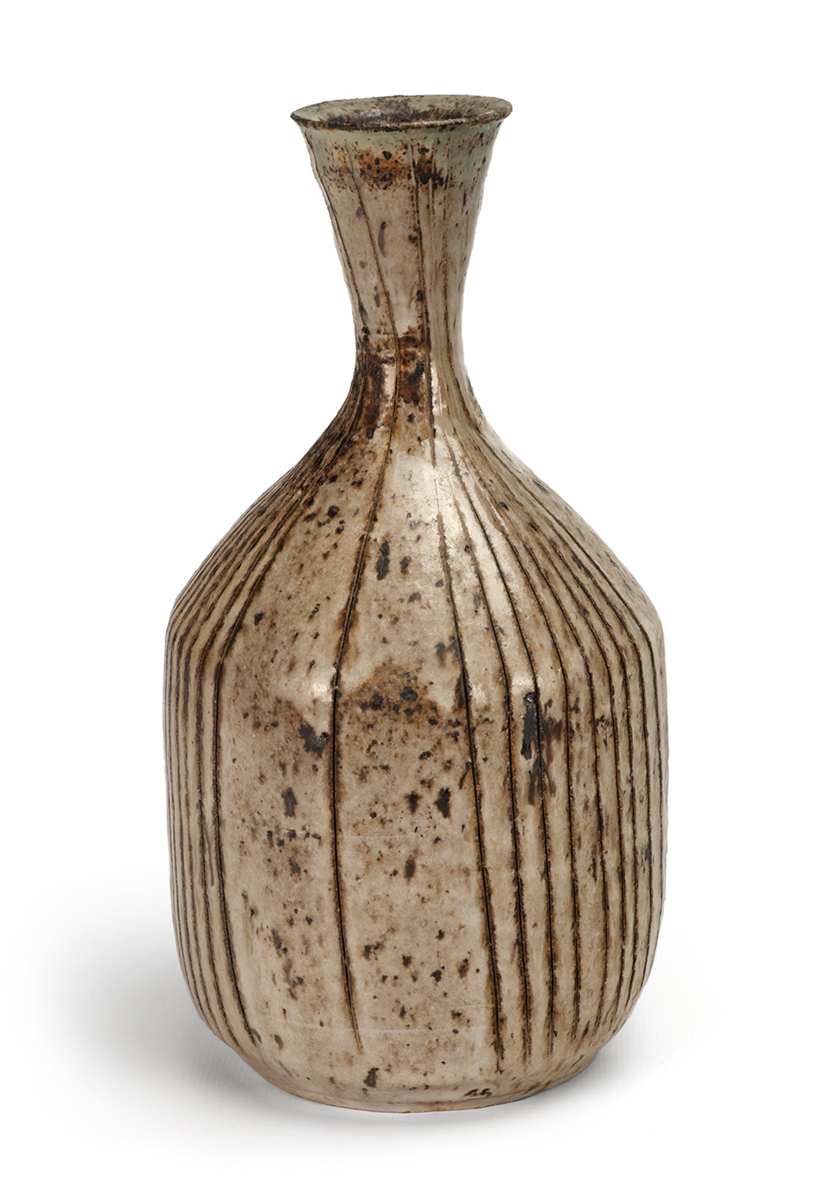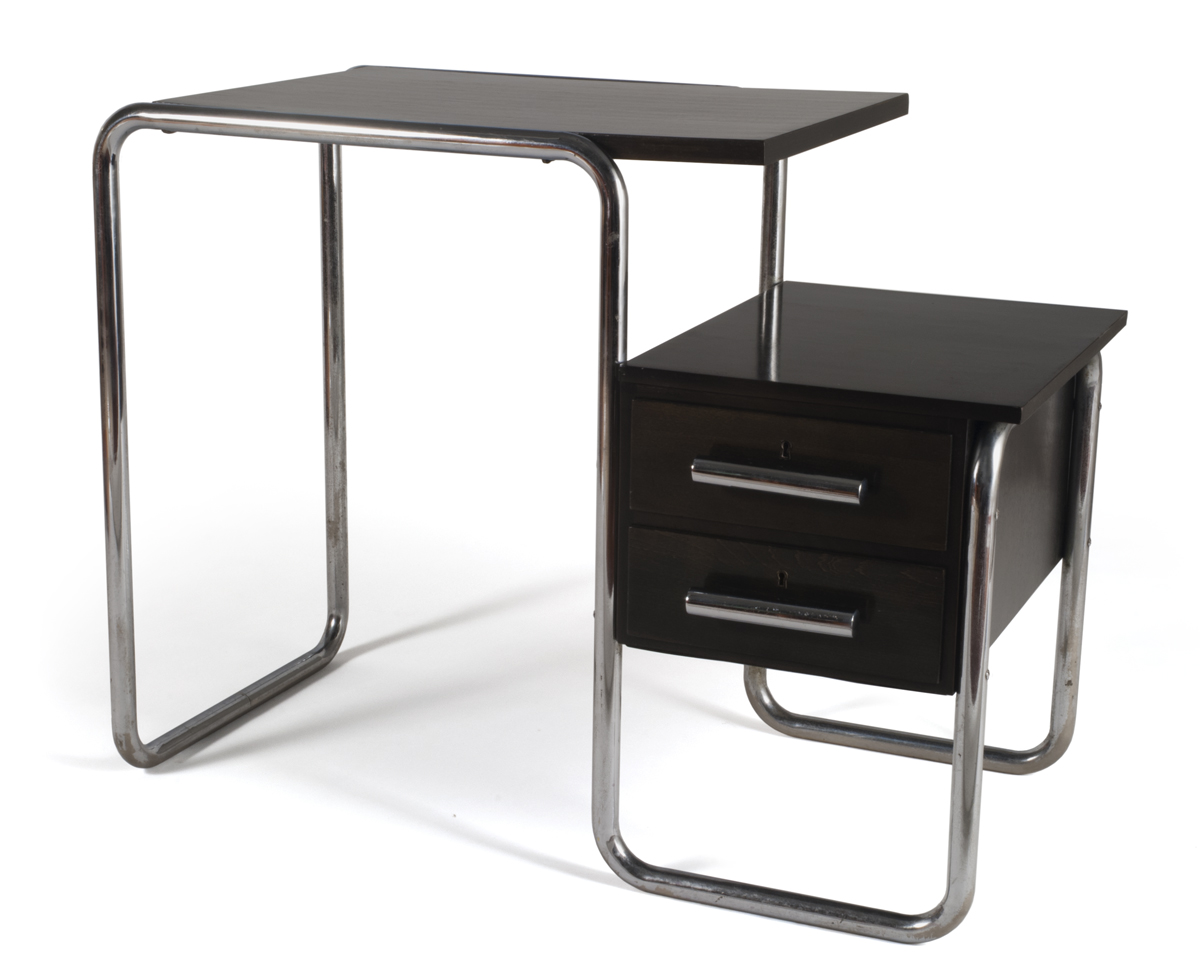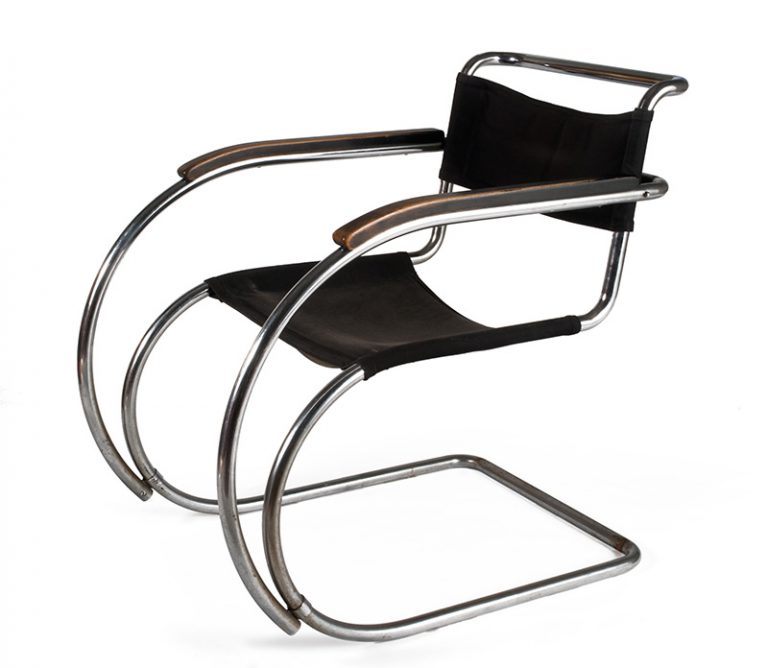
Armchair (Model MR 534)
Design Date 1927
Designer Ludwig Mies van der Rohe (1886-1969, American, b. Germany)
Manufacturer Gebrüder Thonet (1853-present), Vienna, Austria
Media chrome-plated tubular steel, wood and canvas upholstery
Dimensions 31 1/8 x 21 x 32 1/2 inches
Ludwig Mies van der Rohe’s cantilevered armchair was one of a string of such designs in the 1920s. In 1927 Mies applied for a patent to protect his use of the “spring quality of steel tubes.” A key element of this cantilevered chair was its resiliency, a slight flexibility of the metal legs that allowed it to bend a little as the user sat down, and to return to its original form when the user stood up. The first cantilevered chair (designed 1924, produced 1926 and represented in Kirkland Museum’s collection) was built out of gas pipes and pipe fittings by Mart Stam, a Dutch architect. Mies was inspired by Stam’s design after learning of it through the Deutscher Werkbund in 1926. The appearance of continuous steel tubing was a popular element among designers of the time, including Le Corbusier and Breuer, who got the idea from the metal tubing on his bicycle. In the late 1920s and 1930s, there were conflicts and lawsuits between designers claiming to have been the first to create the cantilevered chair. However, the design was easily appropriable and was inspired in general by the use of tubular steel in earlier Bauhaus furniture. Modernist designers liked the idea of a person sitting in the cantilevered chair and appearing to float in mid-air, as well as the idea of vanquishing a heretofore universal form: the four-legged chair. The cantilevered design seemed daring and dangerous, and tested the sitter’s trust in the design.
ON VIEW in Promenade Gallery 2
Markings unmarked
Credit Line Collection Kirkland Museum of Fine & Decorative Art
Accession Number 2009.1026

